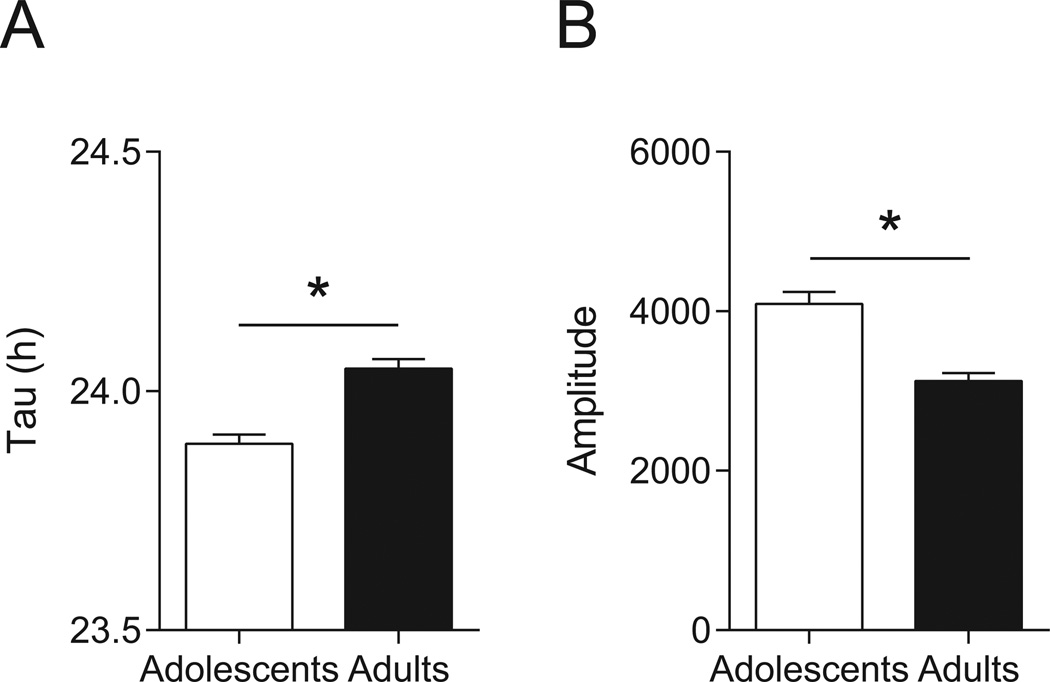Fig. 5.
Age-related changes in endogenous circadian period. (A) Endogenous, or free-running, period (tau in DD) was shorter in adolescents (n = 41) than adults (n = 43). Notably, free-running period in adolescents was shorter than 24 h, whereas it was longer than 24 h in adults. (B) Circadian rhythm amplitude remained higher in adolescents compared to adults in DD. The possibility that acute ethanol affected endogenous period or amplitude in mice from either age group was ruled out prior to this analysis. Data are mean ± SEM; *p < 0.05.

